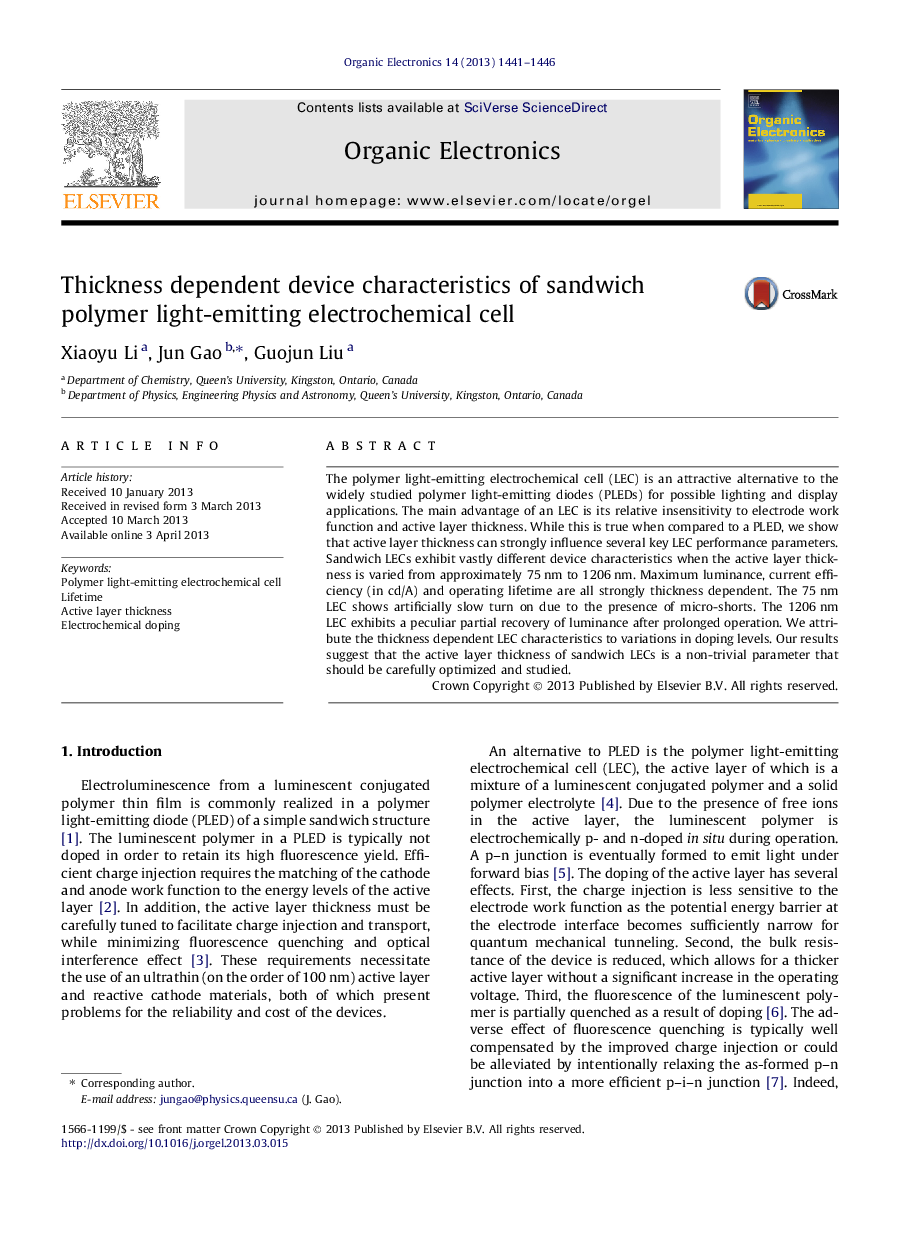| Article ID | Journal | Published Year | Pages | File Type |
|---|---|---|---|---|
| 1264502 | Organic Electronics | 2013 | 6 Pages |
Graphical abstractFigure optionsDownload full-size imageDownload as PowerPoint slideHighlights•Sandwich polymer light-emitting electrochemical cells (LECs) of various thicknesses are studied.•Key performance parameters of sandwich LECs are found to be strongly dependent on the active layer thickness.•Some LECs display partial luminance recovery during continuous operation.•The level of doping varies with the active layer thickness.•The active layer thickness is a non-trivial parameter that should be optimized for LECs.
The polymer light-emitting electrochemical cell (LEC) is an attractive alternative to the widely studied polymer light-emitting diodes (PLEDs) for possible lighting and display applications. The main advantage of an LEC is its relative insensitivity to electrode work function and active layer thickness. While this is true when compared to a PLED, we show that active layer thickness can strongly influence several key LEC performance parameters. Sandwich LECs exhibit vastly different device characteristics when the active layer thickness is varied from approximately 75 nm to 1206 nm. Maximum luminance, current efficiency (in cd/A) and operating lifetime are all strongly thickness dependent. The 75 nm LEC shows artificially slow turn on due to the presence of micro-shorts. The 1206 nm LEC exhibits a peculiar partial recovery of luminance after prolonged operation. We attribute the thickness dependent LEC characteristics to variations in doping levels. Our results suggest that the active layer thickness of sandwich LECs is a non-trivial parameter that should be carefully optimized and studied.
